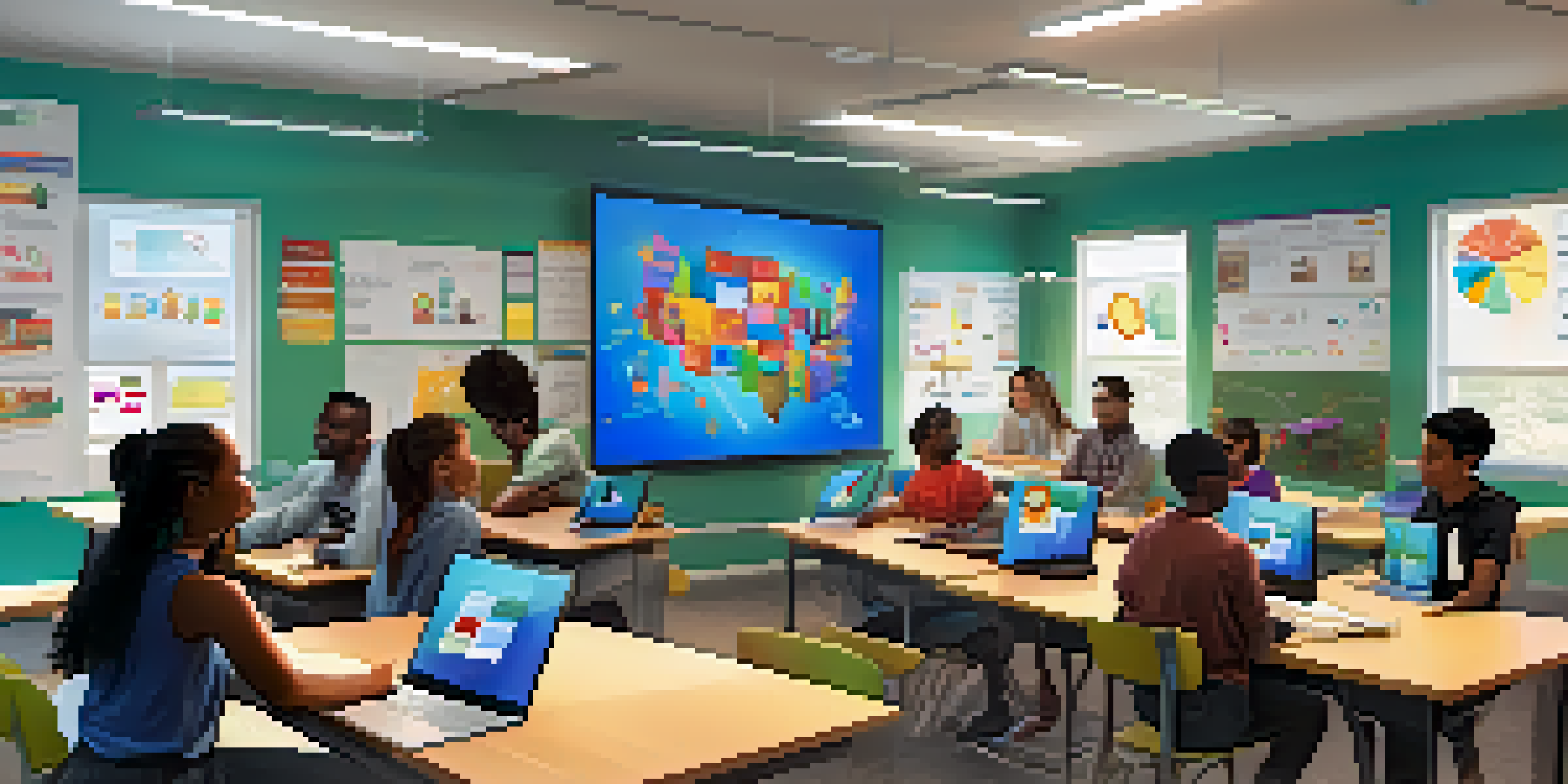The Role of Instructor Presence in Blended Learning Success

Defining Instructor Presence in Blended Learning
Instructor presence refers to the tangible and intangible ways educators engage with students in a blended learning environment. It's not just about being physically present in a classroom or online; it's about being actively involved and visible in students' learning journeys. This presence can manifest through various forms, like timely feedback, interactive discussions, or even casual check-ins, creating a more connected learning atmosphere.
A great teacher takes a hand, opens a mind, and touches a heart.
In blended learning, where online and face-to-face elements coexist, instructor presence becomes even more crucial. Students often navigate through digital platforms where they might feel isolated, making it essential for instructors to bridge that gap. By fostering a sense of community, instructors can help students feel more motivated and supported, enhancing their overall learning experience.
Ultimately, instructor presence is about creating a learning environment where students feel valued and engaged. This presence helps to establish trust, encourages participation, and fosters a positive learning culture, which is vital for success in blended learning frameworks.
The Impact of Instructor Presence on Student Engagement
One of the most significant benefits of strong instructor presence is the boost it gives to student engagement. When instructors are actively involved, students are more likely to participate in discussions and collaborate with their peers. This engagement is essential because it transforms passive learning into an interactive experience, making concepts easier to grasp and retain.

Moreover, when instructors show genuine interest in their students' progress, it motivates learners to take ownership of their education. For example, personalized feedback or encouragement can inspire students to dive deeper into their studies. This kind of engagement not only enhances academic performance but also builds a sense of belonging within the learning community.
Instructor Presence Boosts Engagement
A strong instructor presence encourages student participation and transforms passive learning into an interactive experience.
Additionally, when students feel connected to their instructors, they are more likely to ask questions and seek help when needed. This open line of communication can lead to more profound learning experiences and ultimately higher student satisfaction in blended learning environments.
Building Community Through Instructor Presence
A strong instructor presence plays a pivotal role in building a sense of community among students. In blended learning settings, where interactions may be limited, instructors can foster connections by creating spaces for students to share ideas and collaborate. This can be done through group projects, discussion forums, or interactive virtual meet-ups.
Teaching is not a lost art, but the regard for it is a lost tradition.
When students feel part of a community, it enhances their motivation and commitment to the course. Instructors can facilitate this by encouraging peer-to-peer interactions, which not only strengthens relationships but also enriches the learning experience. For instance, assigning group tasks can encourage students to learn from each other, fostering collaboration and support.
Moreover, an instructor's active presence can help to mitigate feelings of loneliness that some online learners experience. By taking the time to engage with students and promote a communal spirit, instructors can create a more inclusive and enjoyable learning environment.
The Role of Feedback in Establishing Instructor Presence
Feedback is a cornerstone of effective teaching and a critical component of instructor presence. Timely and constructive feedback helps students understand their strengths and areas for improvement, fostering a growth mindset. In blended learning, where students may feel disconnected, regular feedback can reinforce that their work is being valued.
For example, an instructor who provides quick responses to assignments or participates in online discussions sends a message that they are actively engaged in the learning process. This encourages students to stay focused and motivated, knowing their efforts are recognized. The more feedback students receive, the more they feel supported and guided on their learning path.
Building Community is Essential
Creating a sense of community among students enhances motivation and commitment, especially in blended learning environments.
In essence, feedback serves as a bridge between the instructor and the students, enhancing the overall learning experience. It not only helps to clarify expectations but also encourages ongoing dialogue, which is vital in blended learning environments.
Creating a Supportive Learning Environment
Instructor presence is crucial in cultivating a supportive learning environment where students feel safe to express their thoughts and opinions. In blended learning settings, students may hesitate to share their ideas in a virtual space. Instructors can mitigate this by establishing ground rules for discussions and encouraging respectful communication.
When instructors create a culture of openness and respect, students are more likely to engage and contribute. They feel empowered to express their views without fear of judgment, leading to richer discussions and a more dynamic classroom experience. For instance, acknowledging diverse perspectives in discussions can foster a deeper understanding of course material.
Ultimately, a supportive environment nurtured by instructor presence not only enhances learning but also promotes emotional well-being. Students who feel safe and supported are more likely to take academic risks, leading to personal and academic growth.
Balancing Online and Face-to-Face Interactions
In blended learning, striking the right balance between online and face-to-face interactions is essential for maximizing instructor presence. While online tools provide flexibility and accessibility, in-person interactions can foster deeper connections. Instructors should be intentional about how and when to engage in both formats to ensure students receive a well-rounded educational experience.
For instance, scheduling regular in-person meetings can complement online discussions, providing students with opportunities to clarify doubts and deepen their understanding. This hybrid approach allows instructors to cater to different learning styles and preferences, enhancing the overall effectiveness of the course.
Feedback Reinforces Learning
Timely and constructive feedback from instructors helps students feel valued and supported, enhancing their overall learning experience.
Moreover, leveraging technology during face-to-face sessions, such as using digital polls or collaborative tools, can amplify engagement and participation. By combining both online and offline interactions, instructors can create a dynamic learning environment that keeps students engaged and motivated.
The Future of Instructor Presence in Education
As education continues to evolve, so too will the role of instructor presence in blended learning. With advancements in technology, instructors will have more tools at their disposal to engage with students effectively. This may include virtual reality experiences, interactive platforms, or AI-driven learning tools that enhance connection and community.
However, despite these technological advancements, the human element of teaching will remain irreplaceable. The ability to connect, empathize, and inspire students is something that technology can't replicate. Thus, as we look to the future, instructor presence will continue to be a vital aspect of successful blended learning experiences.

Ultimately, embracing new methods while maintaining a strong, visible presence will help educators navigate the changing landscape of education. As instructors adapt and innovate, they will play a key role in shaping the future of learning, ensuring that students feel supported and engaged throughout their educational journey.